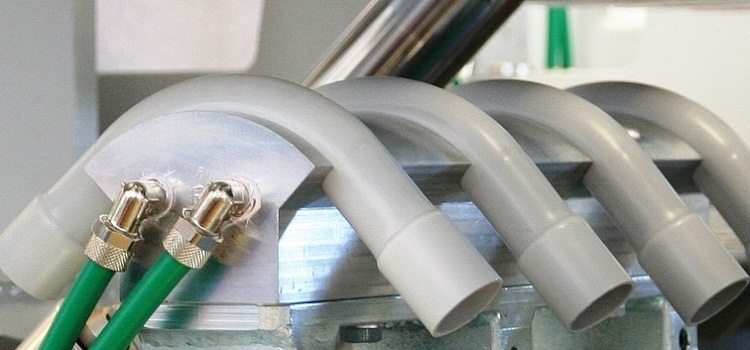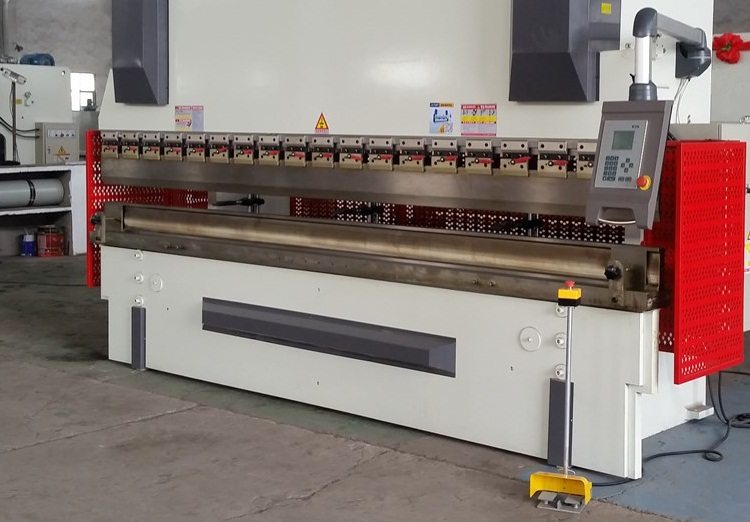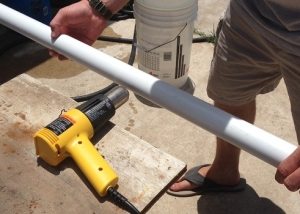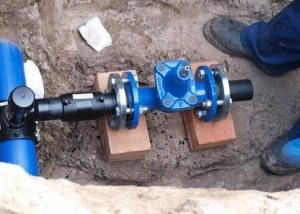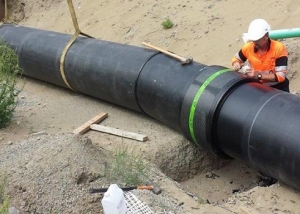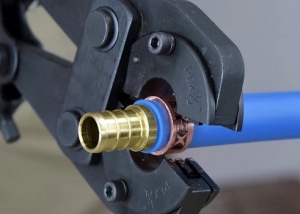Often when installing engineering systems, it is necessary to lay some sections at a certain angle to each other. Since the HDPE pipe is flexible, with the help of special equipment and devices it is possible to give it the desired shape. Many believe that the performance of such work is exclusively for professionals. They argue this with the fact that only a real specialist, knowing the radius of the pipe, can correctly form the required bending radius.
Content
Bending methods
HDPE products are included in the category of thermoplastic materials. This makes it possible to heat them to a viscous or highly elastic state, and in the process of cooling to obtain the desired configuration while maintaining the structure of the material. You can create a bend using:
- building hot air gun;
- molding machine;
- gas hand burner;
- hot water.
Consider some of the features inherent in the most common methods.
Bending using a molding machine. This method is used mainly on an industrial scale. However, such a device is often used by home masters.
The implementation of certain bending radii of pipes is carried out by:
- roller breaks around the template. In this case, the filler is not added;
- winding up on a template. This time there is a mandrel inside the pipe.
When working on molding machines, the following sequence of actions is observed:
- Marking and cutting pipes to workpieces.
- The workpiece is heating up.
- Actually flexible workpiece.
- Its cooling.
- Trimming the ends.
During bending on molding machines, it is necessary to control the value of the following parameter:
X = S / Dn
where S is the cross section of the product; D - outside diameter.
In numbers, it should look like this:
- when running around the pattern X≥0.065;
- when winding on a pattern X≤0,065.
To determine the length of the workpiece, the following formula is used:
L = (ω * π * r / 180) + 2l.
Here: - bending angle, expressed in degrees; π — known transcendental constant (pi); r is the bending radius along the longitudinal axis; l is the length of the straight section required for connecting the elements of the pipeline by cold welding. The value of this parameter is calculated as follows:
l = 2Dn
The unit is millimeters.
Removal from the finished product template should be completed by reducing the bending radius of the HDPE pipe by 1.2 times. This requirement is due to the presence of elastic deformation in the material. If another connection method is used, the length of the straight section should be
L = 4D
Under this condition, if the pipe must be bent to standard angles 90˚, 60˚, 45˚, 30˚, the length of the workpiece should be selected from the table below.
Table 1
| Bending angle, degrees | The lengths of the workpieces L, depending on their diameter, millimeters | ||||||||||
| 160 | 140 | 125 | 110 | 90 | 75 | 63 | 50 | 40 | 32 | 25 | |
| 90 | 1650 | 1440 | 1290 | 1135 | 930 | 775 | 645 | 515 | 455 | 405 | 360 |
| 60 | 1315 | 1150 | 1025 | 905 | 740 | 620 | 515 | 410 | 370 | 340 | 310 |
| 45 | 1145 | 1005 | 840 | 790 | 645 | 540 | 450 | 380 | 330 | 305 | 280 |
| 30 | 980 | 855 | 765 | 670 | 550 | 460 | 385 | 310 | 285 | 270 | 255 |
Tip! It may happen that the dimensions of the molding machine will not allow the HDPE pipe to be heated to the desired length. Then bend several times.
The time to give the product the desired configuration should be:
- no more than 40 seconds for products with a diameter of up to 90 millimeters;
- no more than 60 seconds with a diameter of PND pipes up to 160 millimeters.
Bending using a building hair dryer. Proceed as follows:
- make a template using a jigsaw;
- cut a piece of pipe of the required length;
- heat the workpiece. For uniform heating, scroll it around the longitudinal axis. The implementation of the minimum bending radius of the HDPE pipe will be ensured by heating to a temperature in the range;
- bending of the workpiece. The bending time of the product does not differ from the duration of this procedure on the molding machine - 40 seconds and 60 seconds, respectively;
- bend smoothly to prevent tearing at the point of deformation;
- cool the pipe. At the same time, it must be fixed in a bent position;
- trimming the ends. A special tool is used for this.
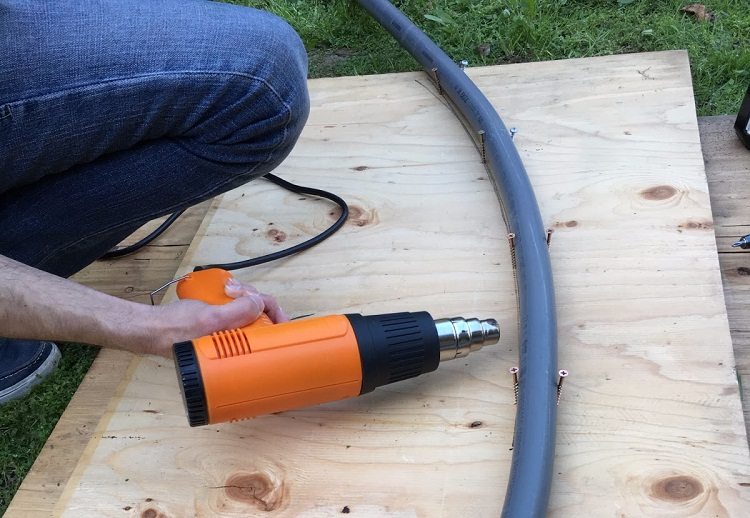
By heating the pipe with hot air, you can easily give it the desired shape, this method is suitable for home conditions
In the case when it is necessary to obtain a small bending radius over a short length (of the order of 1 meter), a template can be dispensed with. Warm up the marked area, then picking up the ends of the pipe, bend it slightly and hold until it cools completely.
Minimum bending radius of polyethylene pipes
Polyethylene, in fact, is a unique material that is simultaneously characterized by strength and elasticity. The combination of these properties allows you to change the path of the pipelines created from it without the use of additional branches. The values of the minimum bending radius of HDPE pipes, depending on the laying temperature and SDR, are presented in table No. 2.
table 2
| Dimension ratio (standard) | Bending radii (minimum) at gasket temperature | ||
| 20˚С | 10˚С | 0 ° C | |
| SDR9 | 20 d | 35d | 50d |
| SDR11 | |||
| SDR13.6 | |||
| SDR17 | |||
| SDR17.6 | |||
| SDR21 | 30d | 50d | 75d |
| SDR26 | |||
| SDR33 | 50d | 85d | 125d |
| SDR41 | |||
Thermal expansion of HDPE pipes causes changes in the length of the angle-forming segments. Ultimately, this affects the value of the parameter.
Y = Ld./ Lx,
where Ld. - arc length; Lx. - the length of the chord.
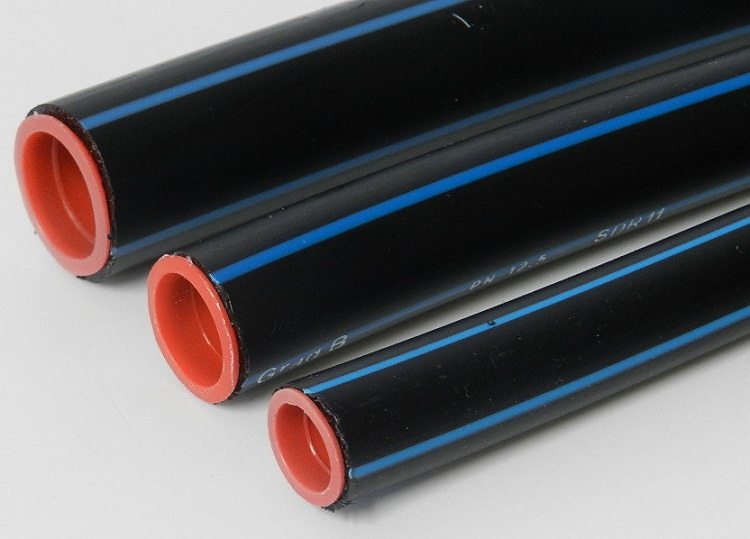
The diameter and wall thickness of the pipes are important parameters for calculating the bending radius.
If we take the value of the radius of the pipe R per unit, then the minimum bending radius will correspond to the data presented in table No. 3.
Table 3
| Temperature difference, ΔTºС | Deflection arrow, m | Chord Length, m | Arc length, m | Ratio Ld./ Lx |
| 100 | 0,0633 | 0,7004 | 0,7156 | 1,022 |
| 90 | 0,0574 | 0,6676 | 0,6807 | 1,0196 |
| 80 | 0,0517 | 0,6346 | 0,6458 | 1,0176 |
| 70 | 0,0463 | 0,6014 | 0,6109 | 1,0168 |
| 60 | 0,0387 | 0,5513 | 0,5585 | 1,0131 |
| 50 | 0,0341 | 0,5176 | 0,5236 | 1,011 |
| 40 | 0,0256 | 0,4499 | 0,4538 | 1,0087 |
| 30 | 0,0201 | 0,3967 | 0,4014 | 1,0067 |
| 20 | 0,0137 | 0,3301 | 0,3316 | 1,0045 |
| 10 | 0,0064 | 0,2264 | 0,2269 | 1,0022 |
Important! Accurately performed calculations will provide an opportunity to lay pipelines with a “snake”, which will ensure bypassing small obstacles while maintaining the desired direction of transportation of the working medium.
Bending radii of pipes from other materials
HDPE pipes appeared on the market not so long ago. Therefore, it will be useful to talk about the features of the bending of products that are most often found in buildings of different years of construction. We are, of course, talking about steel pipes. They are bent using a pipe bending machine, blowtorch and tube rolling machine. You can find out the features of the use of this equipment from the Internet. And remember that a good result will only ensure that you follow the steps of the instructions found on the Web or attached to the device. To navigate in numbers, study table number 4. For specifics, it presents data on the minimum bending radius of a steel water and gas pipe made in accordance with the requirements of GOST 3262 of 1975.
Table 4
| The size | The smallest bending radius, mm | Lmin - the smallest length of a free section, mm | ||
| Outer diameter mm | Conditional pass, mm | In cold condition | Hot | |
| 114 | 100 | 680 | 340 | 230 |
| 88,5 | 80 | 530 | 265 | 170 |
| 75,5 | 65 | 450 | 225 | 150 |
| 60 | 50 | 360 | 180 | 120 |
| 48 | 40 | 290 | 150 | 100 |
| 42,3 | 32 | 250 | 130 | 85 |
| 33,5 | 25 | 200 | 100 | 70 |
| 26,8 | 20 | 160 | 80 | 55 |
| 21,3 | 15 | 130 | 65 | 50 |
| 17 | 10 | 100 | 50 | 45 |
| 13,5 | 8 | 80 | 40 | 40 |
The “Smallest Free Section Length” featured in this table displays the length of the pipe to ensure a reliable grip.
Many home craftsmen today prefer metal-plastic pipe products. Their construction includes a polymer base and a reinforcing layer in the form of foil or mesh. It is this component that provides the pipes with the ability to bend at the required angle and maintain the resulting configuration.
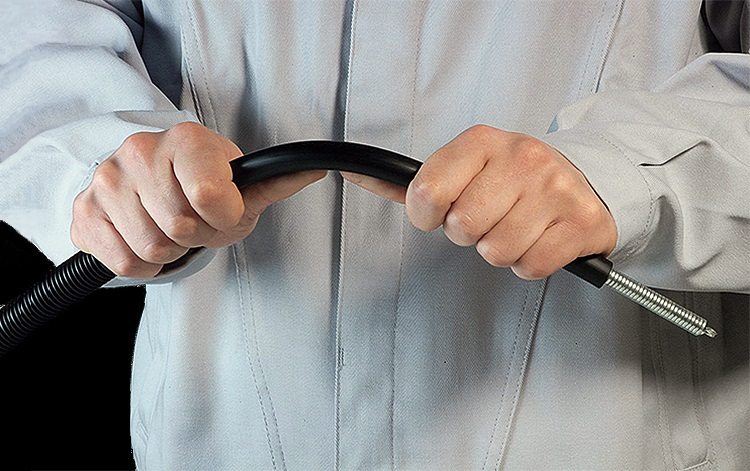
Small diameter pipes (even those that have a metal core) can be bent using a spring, but with this method, the minimum and maximum bending radius must also be taken into account
Bending of metal-plastic elements of the future pipeline is carried out in three ways:
- mechanical (using pipe bender);
- manually. The simplest and cheapest method: there is no need to purchase special equipment;
- with a spring. A spring with a higher level of stiffness should be used here. It is necessary to place it on the entire length of the metal-plastic product. But before that, do not forget to attach a wire to one of the ends of the spring so that after the bending process you can remove it from the pipe cavity.
The values of the minimum bending radius of the metal-plastic pipe can be found in table No. 5.
Table 5
| Bending method | The outer diameter of the plastic pipe | ||||
| 40 | 32 | 26 | 20 | 16 | |
| With pipe bender | 180 | 125 | 95 | 60 | 45 |
| With spring | 220 | 135 | 105 | 65 | 50 |
| Manually | 550 | 160 | 130 | 100 | 80 |
The data presented in all tables should serve as a starting point in the search for an answer to the question of what radius to bend the segment of the pipeline being created. If you try to bend to a smaller radius, you risk damaging the pipe.
